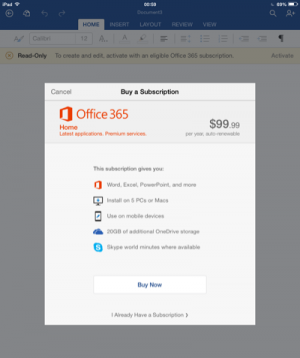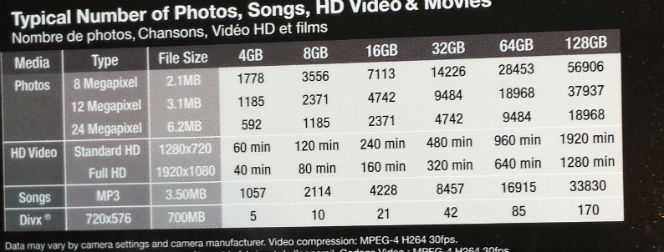Telecoms resellers becoming obsolete?
 In the second of our WebRTC articles this week, Chris Barley asks ‘what might the comms reseller look like in a software world’? Chris has spent too many years in telecoms, starting out in business development in the early days at NTL, where he was responsible for satellite services and data network roll out, followed by a product manager role at LCR service provider ACC Telecom, where he was responsible for Intelligent Network and broadband services. More recently Chris worked at iHub, heading up product and network roll out for hosted voice services.
In the second of our WebRTC articles this week, Chris Barley asks ‘what might the comms reseller look like in a software world’? Chris has spent too many years in telecoms, starting out in business development in the early days at NTL, where he was responsible for satellite services and data network roll out, followed by a product manager role at LCR service provider ACC Telecom, where he was responsible for Intelligent Network and broadband services. More recently Chris worked at iHub, heading up product and network roll out for hosted voice services.
With the role of software becoming more dominant as a disrupter in many industries, it is interesting to look at what the potential affects of software development could be on the communications world.
A recent poll revealed that 80% of Fortune 500 Company CEOs were concerned that their businesses would face a serious threat from the tech sector in the next 10 years. This is due to many large corporates trying to keep competitive by applying sticky plaster to their legacy business models, only to see new software companies solving the same problem at a fraction of the time and cost.
So what does this mean for communications? Curiously for a tech segment, it could be argued that the comms industry has not been very adventurous when it comes to product innovation. A business requiring voice comms is sometimes offered a hosted service, but it is equally likely that a bit of hardware will be installed with traditional black phones placed on the desk, a solution that has stood reasonably still over the last 20 or so years.
In the case of the traditional PBX and phone installation, the infrastructure, telco lines, central office switches, proprietary software etc, dictated what the solution looked like – which was pretty much the same for every customer, be the user a banker or a builder. Just as importantly, installers and maintainers were required to look after all the equipment, adding significantly to the solution’s cost and complexity. The result? Expensive network equipment that provided a fixed solution, supplied through layers of resellers and providers at a high cost necessary to support all the elements in the chain.
The situation has improved with the move to hosted services, with providers offering cloud PBX services to business customers. Whilst the model has been reasonably successful, most observers would however say that it has not reached the rate of penetration that some expected. Unfortunately there are still too many layers of cost in equipment infrastructure and support services that make the hosting model too expensive for rapid penetration in the business market.
But now two things are happening that are changing the future shape of the market – costs are coming down and customers are getting more demanding.
In the comms world as we know, there is no need for expensive telecoms infrastructure to make and receive a phone call. Services are being transferred from circuit switched to IP networks, and as bandwidth speeds and codec efficiencies increase, many voice services will move completely to the internet, where the majority of customers will accept a few quality problems for a free service. Indeed the demand from the younger generation workforce for voice comms has and will continue to decrease, with messaging and video chat rising in importance as their use moves from social to business networks.
At the same time software in most industries is driving business change at a much faster rate, and this is a big challenge for companies that want to remain competitive. Now businesses are moving from large, inflexible, fixed work environments, to more mobile groups of cross functional teams, consisting of knowledge workers that now need to respond more rapidly to market changes.
With the advent of webRTC, it is now likely that web based applications that have changed so many other industry segments will now have a similar effect on the comms world. Now that everyone is speaking the same language, there are substantial opportunities for new operators to take on the existing business model. With a pure software model there is minimal equipment required to provide services. Rather than developing their own full stack, service providers (SPs) such as Veyring can easily just use the APIs from traditional vendors and opensource providers to build services with a wide range of features at a fraction of the cost. In addition the requirement for network and telephony engineers is reduced.
And as these are all services distributed via the web, there will be no requirement for a traditional reseller to install and maintain the service, indeed the end user will be able to buy these solutions directly from the SP, who has packaged the service using APIs from the software vendors themselves. So whereas previously there may have been 5 layers in distributing a service to the end user (vendor – carrier – wholesaler – reseller – end user) increasing there will now only be 3 (vendor – service provider – end user).
This more streamlined and efficient model will result in a dramatically reduced cost base and less inertia in the sign up and onboarding stages. This has the advantage of enabling the freemium business model, where the lower cost base allows the introduction of free services (for a basic product package) that incentivises use and initiates the viral spread of the service. As sign up is a much more frictionless process than installation of traditional services, rapid scale can be achieved. This is important as this engine of growth can be much more cost effective and rapid than off line marketing methods used for the traditional comms solution.
The freemium model works when a certain percentage of users upgrade to the paid service and create a healthy revenue stream for the business. This upsell will be the acid test of a successful service provider, since common freemium take up rates are commonly less than 5%. However applications such as the messaging service Slack, with a paid service take up of in excess of 30%, illustrate what can be achieved with a well designed service that meets the needs of the customer.
A paid service needs to demonstrate real value add for the business user. The key to this value add is likely to be the move to cloud based business applications for many functions and processes, and the expectation that comms will be an integrated element allowing users to complete tasks seamlessly within the same app. Previously this would have required an expensive CTi solution, but now most web based business apps publish APIs that make integration with a comms solution considerably easier and less expensive.
Therefore the SP of the future will not need to focus on providing lines, network, and hardware, but will instead need to differentiate by adding value through developing features that will be relevant to the specific company or industry. This will involve developing new skills around understanding a customer’s business challenges and building product to solve these problems.
These new SPs may originate from web developers and internet companies that understand their customers and see the opportunity to comms enable core business applications and private intranets. Alternatively, it will be interesting to see from the comms sector which resellers embrace this change and are successful in a software dominated market.
Try out WebRTC for yourself… GENBAND KANDY is a real-time communications Platform-as-a-Service that provides access to voice, video, rich-messaging and collaboration services using WebRTC as an enabling technology. Developers can sign up to KANDY and start using their free accounts to run Quick-Start tutorials before integrating into their own applications. ITSPA UK members can enter their KANDY applications and ideas into the GENBAND UK Summer of Apps competition. http://www.trefor.net/events/webrtc-apps-competition/
Loads of posts on WebRTC in general on this site here.
Read the previous post in this Genband sponsored WebRTC week:
The disruptive potential of WebRTC to communications networks by Greg Zweig


 In the second of our WebRTC articles this week, Chris Barley asks ‘what might the comms reseller look like in a software world’? Chris has spent too many years in telecoms, starting out in business development in the early days at NTL, where he was responsible for satellite services and data network roll out, followed by a product manager role at LCR service provider ACC Telecom, where he was responsible for Intelligent Network and broadband services. More recently Chris worked at iHub, heading up product and network roll out for hosted voice services.
In the second of our WebRTC articles this week, Chris Barley asks ‘what might the comms reseller look like in a software world’? Chris has spent too many years in telecoms, starting out in business development in the early days at NTL, where he was responsible for satellite services and data network roll out, followed by a product manager role at LCR service provider ACC Telecom, where he was responsible for Intelligent Network and broadband services. More recently Chris worked at iHub, heading up product and network roll out for hosted voice services.







 Andrew Cormack of Jisc asks the next government for cloud policy guidance over safe and lawful use of cloud offerings
Andrew Cormack of Jisc asks the next government for cloud policy guidance over safe and lawful use of cloud offerings


 schedule
schedule




















